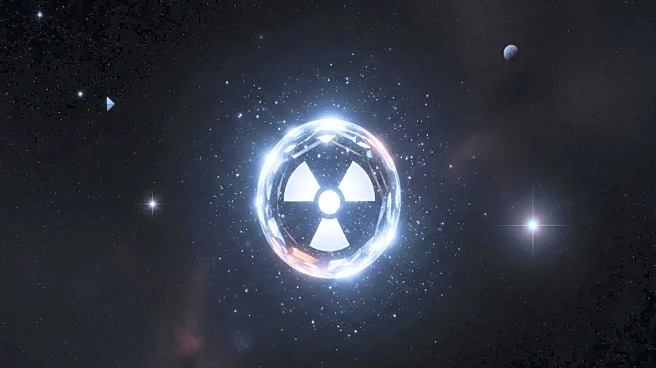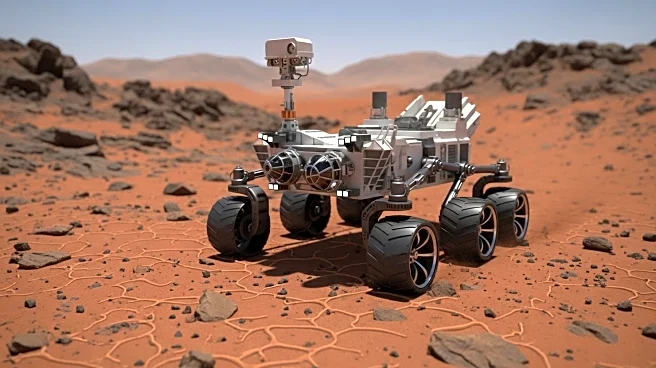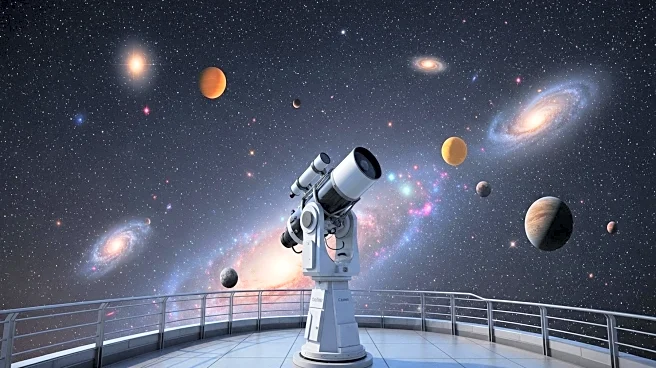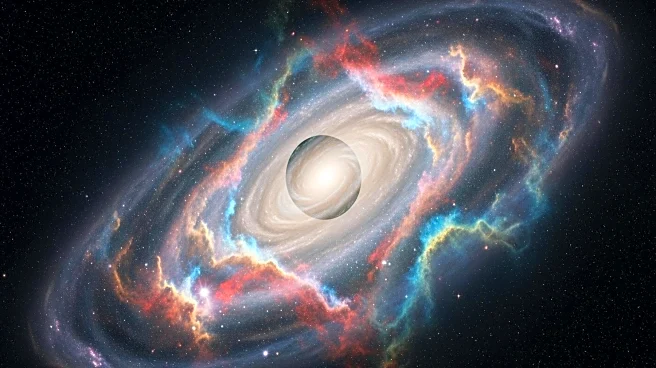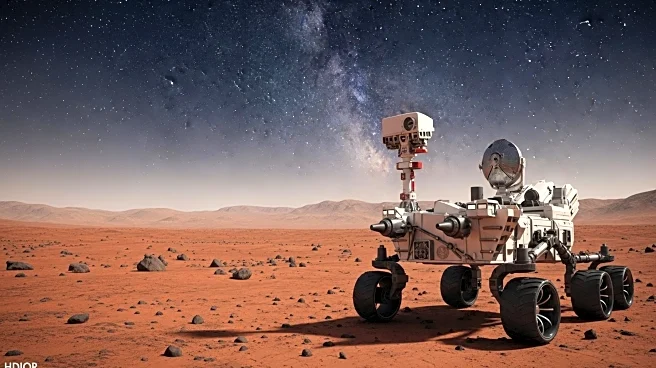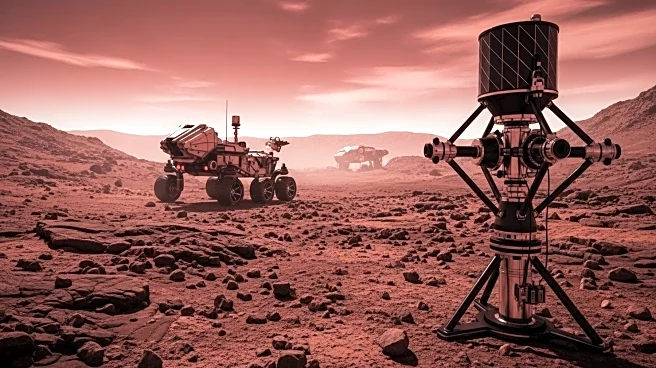What's Happening?
NASA's James Webb Space Telescope is conducting observations of the exoplanet TRAPPIST-1 e, located in the habitable zone of its star, where conditions may allow for liquid water. The telescope's NIRSpec instrument is analyzing starlight passing through the planet's atmosphere to identify its chemical composition. Initial findings suggest that TRAPPIST-1 e likely does not have a primary hydrogen-helium atmosphere, which may have been stripped away by stellar radiation. Researchers are exploring the possibility of a secondary atmosphere, potentially containing carbon dioxide, which could support liquid water.
Why It's Important?
The study of TRAPPIST-1 e is significant as it enhances our understanding of exoplanetary atmospheres and the potential for habitability beyond our solar system. The findings could provide insights into the conditions necessary for life and inform future missions aimed at detecting biosignatures on distant worlds. The research also challenges existing models of planetary formation and atmospheric retention, particularly around active stars like TRAPPIST-1. This work is part of a broader effort to answer fundamental questions about the existence of life elsewhere in the universe.
What's Next?
The research team plans to conduct additional observations of TRAPPIST-1 e, using innovative methods to differentiate between the planet's atmospheric signals and those of its star. These efforts aim to refine the understanding of the planet's atmospheric composition and potential habitability. As more data is collected, scientists hope to develop a clearer picture of the planet's environment, which could guide future exploration missions. The ongoing study of TRAPPIST-1 e represents a step forward in the search for life beyond Earth.

